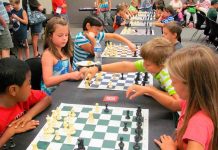Огородникова Наталия Степановна
МБОУ СОШ № 37 города Братск
Английский язык
4 класс
«Животные. Какие они?» «Animals: what are they like?»
Урок закрепления
Урок английского языка в 4 классе
Theme: Animals: what are they like?
Motto: How many animals, so many habits.
Цели урока:
-
образовательная – формирование навыков использования изученной лексики во всех видах речевой деятельности;
-
воспитательная – формирование позитивно- ориентированной личности;
-
развивающая – развитие речевых способностей (фонематического слуха, способности к догадке), психических функций, связанных с речевой деятельностью (речевого мышления, внимания, воображения), способность к общению, развитие мотивации к дальнейшему овладению иноязычной культурой.
Задачи урока:
-
Способствовать развитию навыков устной речи.
-
Способствовать развитию навыков работы с текстом.
-
Способствовать развитию навыков работы в группе.
-
Способствовать развитию навыков монологического и диалогического
ответов.
-
Формирование коммуникативной компетенции.
-
Развитие таких качеств, как креативность, инициативность, трудолюбие, дисциплинированность.
-
Развитие исследовательских учебных действий, включая навыки работы с информацией: поиск и выделение нужной информации, обобщение и фиксация информации.
Оснащение урока: презентации, картинки, карточки с текстами, кроссвордами.
Ход урока.
I.Introduction. Организационный момент:
Hello, boys and girls. Glad to meet you. Today we are going to have an interesting lesson.
II. Challenge Вызов. Знакомство с темой урока:
Look at the blackboard. There are some pictures here. Call them, please.
It’s a dog. ….
Good. What do you think about the theme of the lesson? What will we talk about?
Pets…
Animals…
Yes, you are right. Today we are going to speak about animals and pets.
III. Speaking training. Речевая зарядка.
-
Активизация лексики в речи.
T: Let’s play together. Divide into 2 groups. You must choose a number, then I read riddles about animals in Russian and you will give me answer in English, OK?
P: Ok.
-
1
2
3
4
5
6
7
8
9
10
11
12
T: 1) Летом гуляет Зимой отдыхает, who is it?
P: A bear.
T: 2) Не человек, а говорит, who is it?
P: A parrot.
T: 3) Не король, а в короне, не гусар, а при шпорах,
На часы не глядит, а время знает, who is it?
P: A cock.
T: 4) Мохнатенькая, полосатенькая, молоко пьет, песенки поёт, who is it?
P: A cat.
T: 5) С хозяином дружит, дом сторожит, живет под крылечком, хвост колечком, who is it?
P: A dog.
T: 6) У этого зверя огромный рост, сзади у зверя — маленький хвост. Спереди у зверя — хвост большой. Кто же это? Кто же это? Кто такой? Ну, конечно, это он! Ну, конечно, это: who is it?
P: An elephant.
T: 7) Выпуча глаза сидит
По-французски говорит,
По-блошьи прыгает
По-человечьи плавает, who is it?
P: A frog.
T: 8) Он ходит голову задрав,
Не потому, что гордый нрав,
Не потому, что важный граф,
А потому, что он …
P: A giraffe.
T: 9) Я на двух ногах скачу,
Деток бросить не хочу,
Я их в сумочку беру.
Кто я? – Мама (Кенгуру.) who is it?
P: A kangaroo.
T: 10) С ветки прыгает на ветку
Ест бананы, сладости,
К общей нашей радости, who is it?
P: A monkey.
T: 11) Кто зимой холодной,
Ходит злой, голодный? Who is it?
P: A wolf.
T: 12) Что за коняшки —
На всех тельняшки. Who s it?
P: A zebra.
IV. Phonetic training. Фонетическая зарядка.
T: Very good. You are so smart. Now, look at the blackboard, you can see words. Let’s read and remember the words, begin please: (работают по цепочке)
A bear a dog a kangaroo a horse a sheep a goat a squirrel
A parrot an elefant a monkey a crocodile a dolphin a whale a hamster
A cock a frog a wolf a pig a cow a hedgehog a hare
A cat a giraffe a zebra a shark a fish a gunea-pig a rat
V. Understandig. Осмысление.
Writting. Развитие навыка письменной речи.
T:Well, so many animals we know. Do you like animals? What kind of animals do you know? What wild animals do you know? What domestic animals do you know? Where do animals live? I want you fill in cluster.
|
|
|
|
|
|
|
|
| |
| dolphin |
|
|
|
|
|
|
| dog |
| crocodile |
|
|
|
|
|
|
| cat |
| fish | in the seas, oceans |
|
|
| at home | hamster | ||
| whale |
|
|
|
|
|
|
| guinea-pig |
| shark |
|
|
|
|
|
|
| rat |
|
|
|
| Animals live…. |
|
|
| ||
| pig |
|
|
|
|
|
|
| bear |
| cow |
|
|
|
|
|
|
| hare |
| horse | at a farm |
|
|
| in the forests | wolf | ||
| sheep |
|
|
|
|
|
|
| squirrel |
| goat |
|
|
|
|
|
|
| hedgehog |
|
|
|
|
|
|
|
|
|
|
VI. Reading. Чтение.
T: Dear children, I brought you a text “A tale of tails”. Let’s read.
First of all Let’s read the new words and translate:
-
there is nothing…chasing…– никто не гонится;
-
too bushy…– слишком пушистый;
-
looks silly…– выглядит глупо;
-
the best tail…– самый хороший хвост.
(Children read the text)
“A tale of tails”
Willy Pig does not like to look behind him. He is not afraid. There is nothing big and bad chasing him. Willy Pig does not like his tail! He thinks he will be happy if only he has a tail like a fox. No! A fox’s tail is too bushy for a pig. Oh! He will be happy if he has a tail like a cow!
No! A cow’s tail is too long for a pig. Maybe if he has a beautiful green alligator’s tail?
No! No! No! An alligator’s tail looks silly on a pig. Willy Pig decides that a pig’s curly tail is the best tail for a pig. Don’t you think so?
T: Answer my questions. What is this text about? What is his name? What doesn’t he like? Whose tail does he want? What do you think about pig’s tail?
Children: …
VII. Physical minute. (Физкультминутка) На компьютере появляются вопросы, а дети выполнят движения:
-
Can you hop like a rabbit?
-
Can you jump like a frog?
-
Can walk like a duck?
-
Can you run like a dog?
-
Can you fly like a bird?
-
Can you swim like a fish?
-
And be still like a good child?
VIII. Speaking. Group work. (Работа в группах 5 мин.) (Составление монологических высказываний мин 7 мин.)
You can see some pictures on the screen of computer. These are children and their pets. The pets are different: a tortoise, a cat, a parrot, a hamster and a dog.
You should choose one of these photoes and describe it.
For example: This is Ben. He is seven. He has got a pet. It is a dog. His dog’s name is Rex. Rex is black and white. Ben likes to play and to walk with his dog. Children: …
IX. Conversation. Развитие навыков диалогической речи. Работа над умением восстанавливать диалог, расставляя реплики в нужном порядке
– Children, look! This is a dialogue. But the questions and the answers are mixed. Match the questions and the answers.
1.Have you got a pet? a)Ashby
2.What’s it’s name? b)Ashby is big, strong and kind
3.What does it like to eat? c)Yes, I’ve got a horse
4.What is it like? d)Ashby helps my father to carry things
5.What can it do? e)grass, carrots, apples
X. Fill in crossword puzzle. Заполнение кроссворда.
Dear, pupils. You know lots of animals, there are pets in your families. As for me, I haven’t got a pet. But one animal is my favorite. To know what it is you should do a crossword. Let me divide you in two teams. I’ll give you only one minute. Start, please. Now come to the blackboard, one by one and fill in the crossword. Yes, my favorite animal is elephant. It is big, strong and wise.
| i | t | t | e | n |
|
|
|
| |
|
|
|
|
| l | i | o | n |
|
|
|
|
|
| b | e | a | r |
|
|
|
|
|
|
|
| p | a | r | r | o | t |
|
|
|
|
| h | a | r | e |
|
|
|
|
|
| c | a | t |
|
|
|
|
|
|
| m | o | n | k | e | y |
|
|
|
|
|
|
| t | i | g | e | r |
|
And what animal do you like? Why do you like it?
Children: …
I like panda. Because it’s black-white, funny, clever. It likes to eat bamboo.
My favorite animal is a cat! Because, he is little and beautiful!
IX. Reflection. Results of the lesson. (Заключительная часть (оценки, домашнее задание)
T: Now, I will finish our lesson with poem «My dream» by Billian Brown. Look at the sheet and listen to me.
«My dream»
I love all kinds of animals
Dogs and cats and rabbits
I love all kinds of animals,
Despite their little habits.
If I had tons of money,
Do you know what I would do?
I would buy lots of animals
And have my own zoo.
But they wouldn’t begin cages,
They would, be free to run around.
And there’s one thing they could feel
And that is safe and sound.
А вас я прошу составить Синквейн по теме нашего сегодняшнего урока.
Pets
Kind, funny
Run, jump, play
They live with people
Our friends.
Animals
Big, small
Run, jump, fly
They can help people
Pets
A dolphin
Nice, smart
Jumps, dives, plays,
Lives in the sea
Our friend
T: I think, that our today’s lesson was useful for you, you knew some new information about animals. Thank you for the lesson. Your marks:
X. Home task. (Домашнее задание 2 мин.)
Open your diaries and write down your homework — translate the poem “My dream” and do project- draw a picture of your favourite animal and describe it
Thank you for your work. The lesson is over. Good-bye!
Children:: Good-bye, teacher! Thank you for the lesson.
Технологическая карта урока.
| Деятельность педагога | Деятельность учащихся | ||||||||||||||||||||||||||||||||||||||||||||||||||||||||||||||||||||||||||||||||||||||||
| I. Introduction. Организационный момент:
| Учитель приветствует учащихся Hello, boys and girls. Glad to meet you. Today we are going to have an interesting lesson. | Учащиеся приветствуют учителя | |||||||||||||||||||||||||||||||||||||||||||||||||||||||||||||||||||||||||||||||||||||||
| II. Challenge Вызов. Знакомство с темой урока:
| Учитель просит назвать изображения на картинках Look at the blackboard. There are some pictures here. Call them, please. Учитель предлагает учащимся определить тему урока Good. What do you think about the theme of the lesson? What will we talk about? Yes, you are right. Today we are going to speak about animals and pets. | Учащиеся называют кого они видят на картинках It’s a dog. ….
Предположения учащихся о теме урока Pets… Animals… | |||||||||||||||||||||||||||||||||||||||||||||||||||||||||||||||||||||||||||||||||||||||
| III. Speaking training. Речевая зарядка. 1. Активизация лексики в речи.
| Учитель предлагает учащимся в игровой форме активизировать лексические единицы T: Let’s play together. Divide into 2 groups. You must choose a number, then I read riddles about animals in Russian and you will give me answer in English, OK? Приложение 1
T: 1) Летом гуляет Зимой отдыхает, who is it? T: 2) Не человек, а говорит, who is it? T: 3) Не король, а в короне, не гусар, а при шпорах, На часы не глядит, а время знает, who is it? T: 4) Мохнатенькая, полосатенькая, молоко пьет, песенки поёт, who is it? T: 5) С хозяином дружит, дом сторожит, живет под крылечком, хвост колечком, who is it? T: 6) У этого зверя огромный рост, сзади у зверя — маленький хвост. Спереди у зверя — хвост большой. Кто же это? Кто же это? Кто такой? Ну, конечно, это он! Ну, конечно, это: who is it? T: 7) Выпуча глаза сидит T: 8) Он ходит голову задрав, T: 9) Я на двух ногах скачу, T: 10) С ветки прыгает на ветку T: 11) Кто зимой холодной, T: 12) Что за коняшки — | Учащиеся, играя вспоминают лексику по теме P: Ok.
P: A bear. P: A parrot.
P: A cock.
P: A cat.
P: A dog.
P: An elephant.
P: A frog.
P: A giraffe.
P: A kangaroo.
P: A monkey.
P: A wolf. P: A zebra. | |||||||||||||||||||||||||||||||||||||||||||||||||||||||||||||||||||||||||||||||||||||||
| IV. Phonetic training. Фонетическая зарядка.
| Учитель предлагает учащимся отработать фонетическое произношение лексических единиц по теме T: Very good. You are so smart. Now, look at the blackboard, you can see words. Let’s read, translate and remember the words, begin please: (работают по цепочке) A bear, a dog, a kangaroo, a horse, a sheep, a goat, a squirrel, а parrot, an elephant, a monkey, a crocodile, a dolphin, a whale, a hamster, а cock, a frog, a wolf, a pig, a cow, a hedgehog, a hare, а cat, a giraffe, a zebra, a shark, a fish, a gunea-pig, a rat. | Учащиеся по цепочке читают и переводят слова по теме | |||||||||||||||||||||||||||||||||||||||||||||||||||||||||||||||||||||||||||||||||||||||
| V. Understandig. Осмысление. Writting. Развитие навыка письменной речи.
| Учитель переводит учащихся в фазу осмысления, предлагая учащимся ответить на вопросы по теме и закрепить знание лексических единиц в письменной речи T:Well, so many animals we know. Do you like animals? What kind of animals do you know? What wild animals do you know? What domestic animals do you know? Where do animals live? I want you fill in cluster.
|
Учащиеся отвечают на вопросы по теме
Учащиеся заполняют кластер «Какие животные, где живут» | |||||||||||||||||||||||||||||||||||||||||||||||||||||||||||||||||||||||||||||||||||||||
| VI. Reading. Чтение.
| Дальнейшее осмысление темы проходит в самостоятельной работе с текстом. Учитель предлагает учащимся самостоятельно прочитать текст и ответить на вопросы по тексту. T: Dear children, I brought you a text “A tale of tails”. Let’s read.
“A tale of tails” Willy Pig does not like to look behind him. He is not afraid. There is nothing big and bad chasing him. Willy Pig does not like his tail! He thinks he will be happy if only he has a tail like a fox. No! A fox’s tail is too bushy for a pig. Oh! He will be happy if he has a tail like a cow! T: Answer my questions. What is this text about? What is his name? What doesn’t he like? Whose tail does he want? What do you think about pig’s tail? |
Учащиеся вместе с учителем отрабатывают новые лексические единицы
Самостоятельное чтение текста учащимися
Учащиеся отвечают на вопросы по тексту | |||||||||||||||||||||||||||||||||||||||||||||||||||||||||||||||||||||||||||||||||||||||
| VII. Physical minute. (Физкультминутка)
| На компьютере появляются вопросы, а дети выполнят движения:
|
| |||||||||||||||||||||||||||||||||||||||||||||||||||||||||||||||||||||||||||||||||||||||
| VIII. Speaking. Group work. (Работа в группах 5 мин.) (Составление монологических высказываний мин 7 мин.)
| Дальнейшее осмысление темы проходит в групповой работе над монологическим высказыванием. Учитель предлагает учащимся описать картинки на которых изображены дети с домашними питомцами. Учащимся предложен образец описания. You can see some pictures on the screen of computer. These are children and their pets. The pets are different: a tortoise, a cat, a parrot, a hamster and a dog. You should choose one of these photoes and describe it. For example: This is Ben. He is seven. He has got a pet. It is a dog. His dog’s name is Rex. Rex is black and white. Ben likes to play and to walk with his dog. | Учащиеся в группах пытаются описать картинку со своим сверстником и его домашним любимцем
Children: … | |||||||||||||||||||||||||||||||||||||||||||||||||||||||||||||||||||||||||||||||||||||||
| IX. Conversation. Развитие навыков диалогической речи. | Учитель предлагает учащимся восстановить диалог по теме Работа над умением восстанавливать диалог, расставляя реплики в нужном порядке – Children, look! This is a dialogue. But the questions and the answers are mixed. Match the questions and the answers. 1.Have you got a pet? a)Bamby 2.What’s it’s name? b)Bamby is big, s strong and kind 3.What does it like to eat? c)Yes, I’ve got a — horse 4.What is it like? d)Bamby helps—— my father to carry things 5.What can it do? e)grass, carrots,— apples |
Учащиеся читают набор фраз и восстанавливают порядок диалогической речи
Children: … | |||||||||||||||||||||||||||||||||||||||||||||||||||||||||||||||||||||||||||||||||||||||
| X. Fixing subject. Закрепление темы. Fill in crossword puzzle. Заполнение кроссворда.
| Dear, pupils. You know lots of animals, there are pets in your families. As for me, I haven’t got a pet. But one animal is my favorite. To know what it is you should do a crossword. Let me divide you in two teams. I’ll give you only one minute. Start, please. Now come to the blackboard, one by one and fill in the crossword. Yes, my favorite animal is elephant. It is big, strong and wise.
And what animal do you like? Why do you like it?
| Children: … My favorite animal is a cat! Because, he is little and beautiful!
| |||||||||||||||||||||||||||||||||||||||||||||||||||||||||||||||||||||||||||||||||||||||
| IX. Reflection. Рефлексия. Results of the lesson.
| Заключительная часть Учитель предлагает учащимся выразить свои эмоции по поводу урока в форме синквейна T. Do you like our lesson? Let’s express the emotions with the help синквейна Существительное Два прилагательных Три глагола Предложение Существительное Учитель читает учащимся стихотворение, эмоционально подводя итог изучения темы и предлагает сильным учащимся перевести это стихотворение дома T: Now, I will finish our lesson with poem «My dream» by Billian Brown. Look at the sheet and listen to me. «My dream» I love all kinds of animals If I had tons of money, But they wouldn’t begin cages, | Children: Pets Kind, funny Run, jump, play They live with people Our friends.
Animals Big, small Run, jump, fly They can help people Pets
A dolphin Nice, smart Jumps, dives, plays, Lives in the sea Our friend
| |||||||||||||||||||||||||||||||||||||||||||||||||||||||||||||||||||||||||||||||||||||||
| X. Home task. (Домашнее задание 2 мин.)
| (оценки, домашнее задание) T: I think, that our today’s lesson was useful for you, you knew some information about animals. Thank you for the lesson. Your marks: Open your diaries and write down your homework — translate the poem “My dream” (для сильных учащихся) and make project- draw a picture of your favourite animal and describe it Thank you for your work. The lesson is over. Good-bye! | Children:: Good-bye, teacher! Thank you for the lesson.
|





